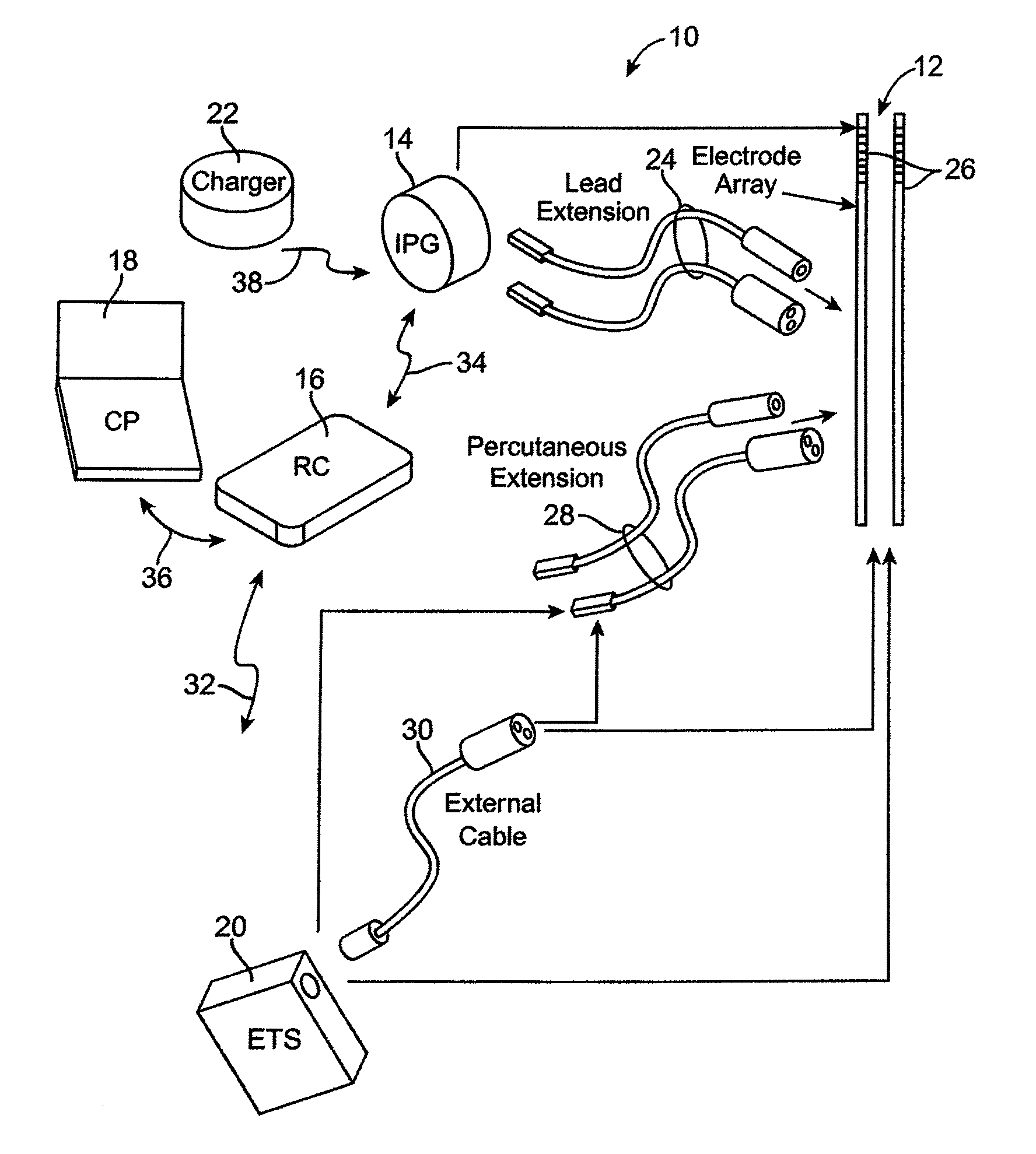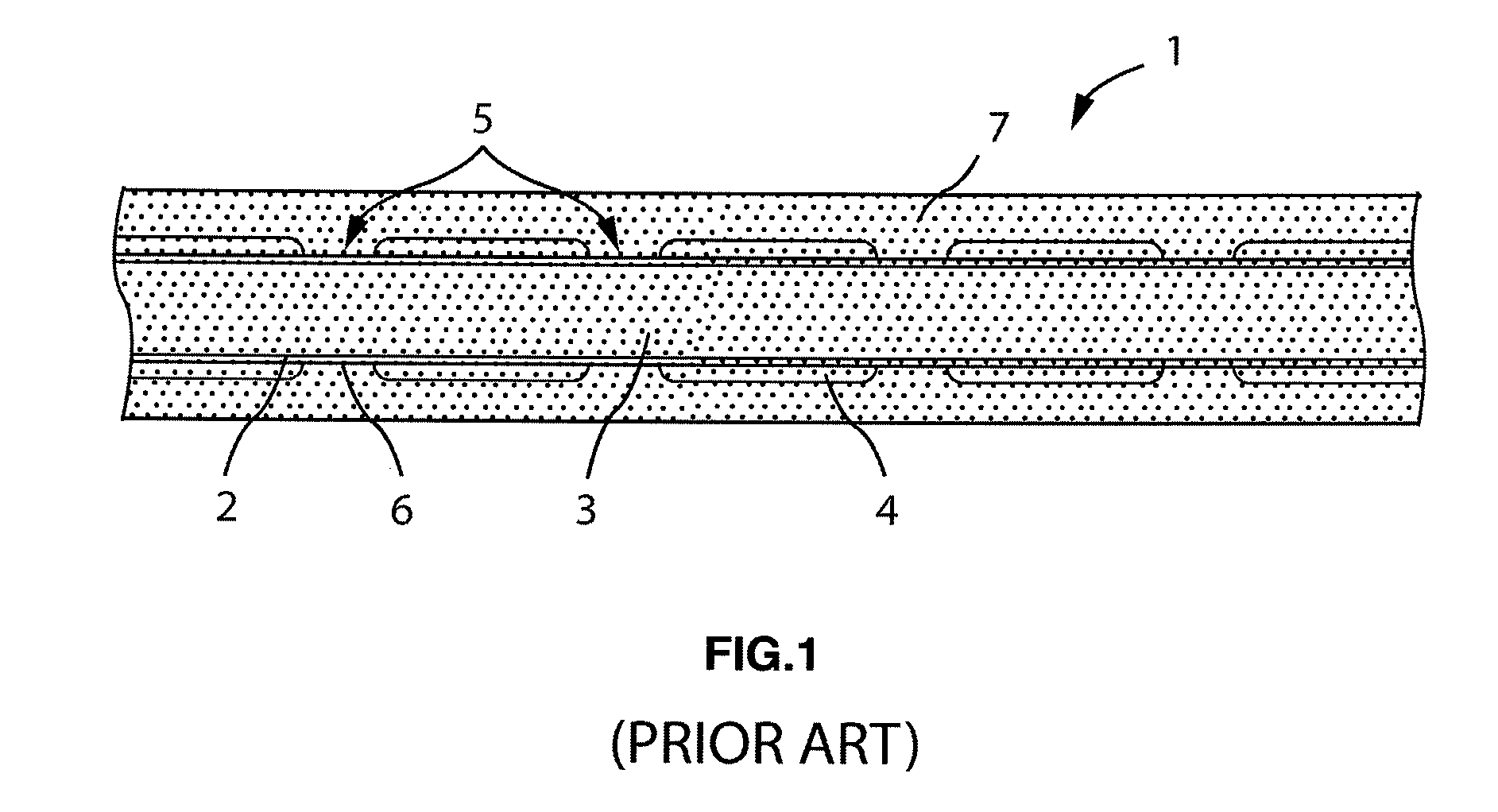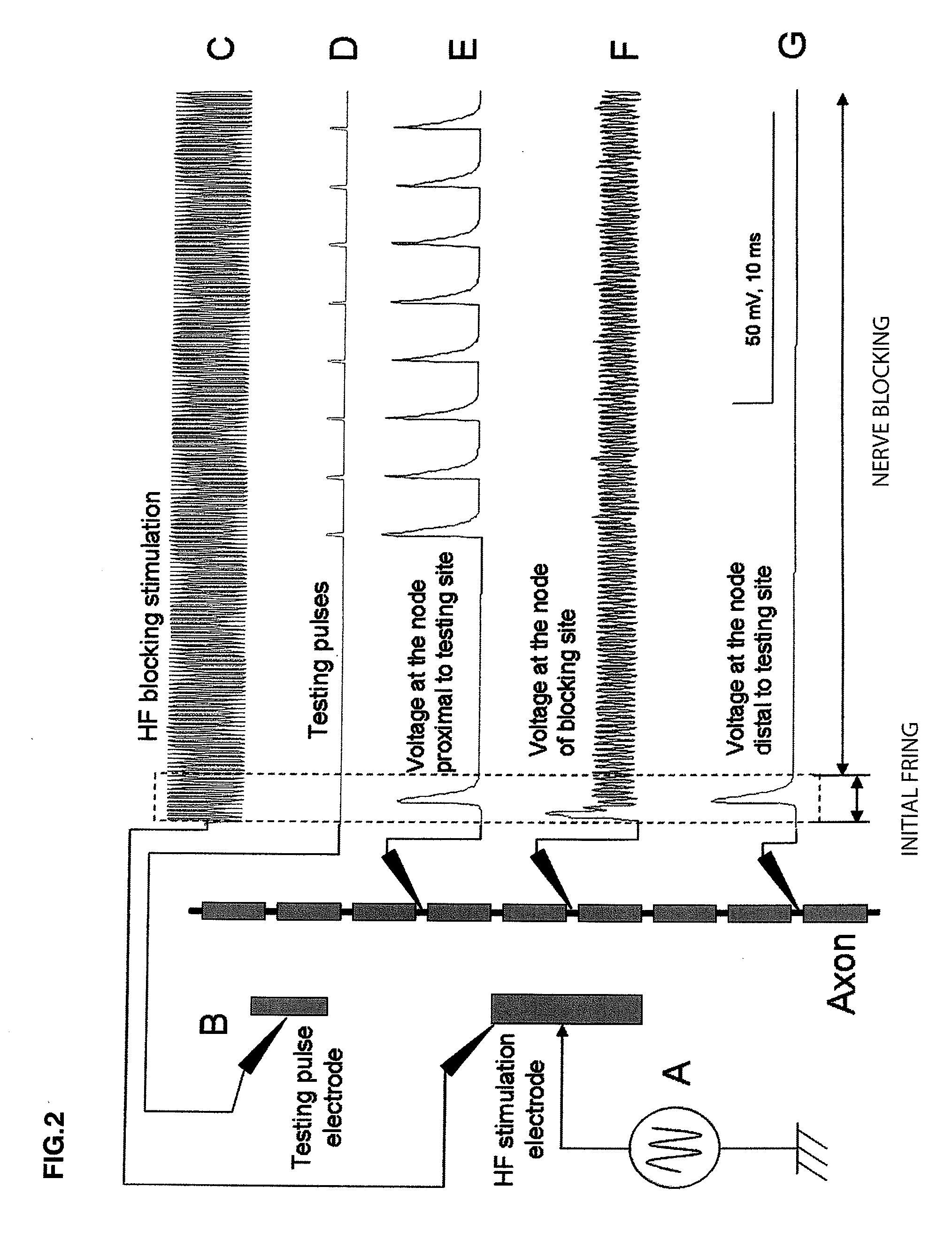[0012]In accordance with a first aspect of the present inventions, a neurostimulation system is provided. The system comprises at least one electrical terminal configured for being respectively coupled to at least one electrode locatable adjacent a blocking site of a neural axon, and analog output circuitry configured for conveying time-varying (e.g., sinusoidal) electrical energy to the at least one electrical terminal. The system further comprises control circuitry configured for instructing the analog output circuitry to convey the time-varying electrical energy during an initial phase and a subsequent phase. In one embodiment, the initial phase is in the range of 0.1-20 ms, and the subsequent phase is greater than the initial phase. An optional embodiment comprises a housing containing the electrical terminal(s), the analog output circuitry, and the control circuitry.
[0013]The conveyed electrical energy has an amplitude and frequency during the initial phase sufficient to block action potentials from propagating along a neural axon from a location proximal to the blocking site to a location distal to the blocking site. In one embodiment, the amplitude is uniform during the initial phase. Preferably, the frequency is greater than 2 KHz, and more preferably, in the range of 3 KHz-20 KHz.
[0014]The conveyed electrical energy has a decreased amplitude and optionally a decreased frequency during the subsequent phase sufficient to maintain blocking of the action potentials along the neural axon from the location proximal to the blocking site to the location distal to the blocking site. In one embodiment, the control circuitry is configured for automatically instructing the analog output circuitry to decrease the amplitude from an initial value at the end of the initial phase to a steady-state value during the subsequent phase. The subsequent phase may be divided into an amplitude adjustment phase and a steady-state phase, in which case, the control circuitry may be configured for instructing the analog output circuitry to gradually decrease the amplitude (e.g., exponentially or linearly) from the initial value to the steady-state value during the amplitude adjustment phase, and for instructing the analog output circuitry to maintain the amplitude at the steady-state value during the steady-state phase.
[0015]In an optional embodiment, the system further comprises at least another electrical terminal configured for being respectively coupled to at least another electrode locatable adjacent a stimulation site of the neural axon proximal to the blocking site. In this case, the analog output circuitry may be further configured for conveying stimulation pulses to the at least other electrical terminal, and the control circuitry may be further configured for instructing the analog output circuitry to convey the stimulation pulses during the initial phase and the subsequent phase to evoke the action potentials at the stimulation site.
[0016]In accordance with a second aspect of the present inventions, a method of blocking a neural axon is provided. The method comprises conveying time-varying (e.g., sinusoidal) electrical energy to a blocking site on the neural axon for an initial phase. The conveyed electrical energy has an amplitude and frequency during the initial phase sufficient to block action potentials from propagating along the neural axon from a location proximal to the blocking site to a location distal to the blocking site. In one method, the amplitude is uniform during the initial phase. Preferably, the frequency is greater than 2 KHz, and more preferably, in the range of 3 KHz-20 KHz.
[0017]The method further comprises conveying the time-varying electrical energy to the blocking site on the neural axon for a subsequent phase contiguous with the initial phase. The conveyed electrical energy has a decreased amplitude and optionally a decreased frequency during the subsequent phase sufficient to maintain blocking of the action potentials along the neural axon from the location proximal to the blocking site to the location distal to the blocking site. In one method, the initial phase is in the range of 0.1-20 ms, and the subsequent phase is greater than the initial phase. In one method, the amplitude is decreased from an initial value at the end of the initial phase to a steady-state value during the subsequent phase. The subsequent phase may be divided into an amplitude adjustment phase and a steady-state phase, in which case, the amplitude may be decreased (e.g., exponentially or linearly) from the initial value to the steady-state value during the amplitude adjustment phase, and the amplitude may be maintained at the steady-state value during the steady-state phase. An optional method further comprises applying stimulation pulses to a stimulation site during the initial phase and the subsequent phase to evoke the action potentials at the stimulation site, wherein the stimulation site is proximal to the blocking site.
 Login to View More
Login to View More  Login to View More
Login to View More 


